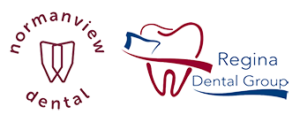Four Teeth Whitening Techniques You Should Consider
In recent cosmetic dentistry industry surveys, findings showed that teeth whitening was the most popular performed dental care treatment in most dental offices. However, with so many options out there, you want to ensure you’re choosing the best and safest product. Knowing the answers to these questions will help you decide which option is most suitable for you.
According to the Canadian Dental Association, the primary agent to whiten teeth is hydrogen peroxide (H2O2.). The level of hydrogen peroxide used is the primary factor when it comes to determining treatment cost. In-chair whitening at the dentist office will always be the most expensive treatment because it uses the highest levels of hydrogen peroxide which guarantee the best results. However, with the demand growing and patients shying away from the high cost, take home kits have become popular in the marketplace. Take home kits offer the possibility of whiter teeth at a reduced cost and fewer side effects. It also marks an evolutionary step in tooth whitening with the patient taking on the responsibility of performing the procedure at home.
The teeth whitening market has evolved into four categories:
- In office whitening systems. Historically, professional whitening procedures were performed in the dental office, typically using concentrated hydrogen peroxide and by isolating surrounding soft tissue to avoid contact with the whitening agent. Although this pretty much guarantees results, drawbacks include: lengthy chair time, higher cost, and the risk of tooth sensitivity.
- Dentist prescribed kits for at home use by the patient. Dentist prescribed kits have significantly less peroxide than in-chair whitening but much more peroxide than OTC strips, gels, and toothpastes. This is why they are prescribed with a list of detailed instructions, to ensure you’re achieving optimal results.
- Over the counter whitening/take home kits. Consumer whitening products available today for home use include:
- Gels
- Rinses
- Chewing gum
- Toothpastes: While ordinary whitening toothpastes relied mainly on their efficacy in removing extrinsic tooth stains, the newer generation or “advanced whitening” dentifrices are also claimed to be effective in removing intrinsic stains.
- Paint-on films: Paint on films normally contain 6-8% hydrogen peroxide and is directly applied to the teeth with a brush. They are used to lighten individual teeth as well as your entire mouth.
- Whitening strips (introduced in the market in the early 2000’s). Very cost effective (in comparison to in-chair whitening procedures), the results do vary and they only have a shelf life of approximately six months.
- Other non-dental options. There are several DIY whitening tips on the market these days. These include rubbing lemon juice, strawberries, and banana peels across your teeth for a whiter smile. Rubbing acids of any kind on your teeth is dangerous and may actually erode your enamel causing more time in the dental chair. Other popular non-dental options include coconut oil pulling and applying activated charcoal on your teeth. According to the American Dental Association, there has been no scientific proof that these two options actually whiten teeth.
Before choosing a teeth-whitening method, it’s also important for you to understand how these products will work. The Canadian Dental Association (CDA) separates whitening into two different methods, surface and bleaching. Bleaching the tooth removes both deep stains and surface stains using products that contain peroxides. Surface bleaching removes only surface stains. Whatever option you choose, it’s always best to ask your dentist first what they recommend and to make sure that it is CDA approved to assure both safety and effectiveness.
